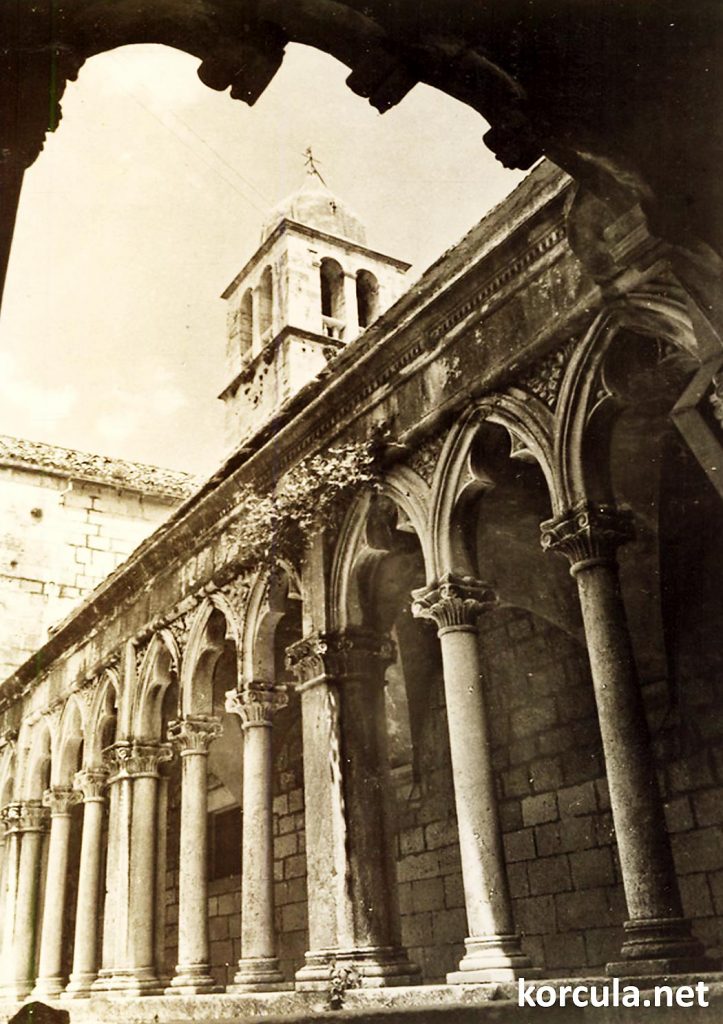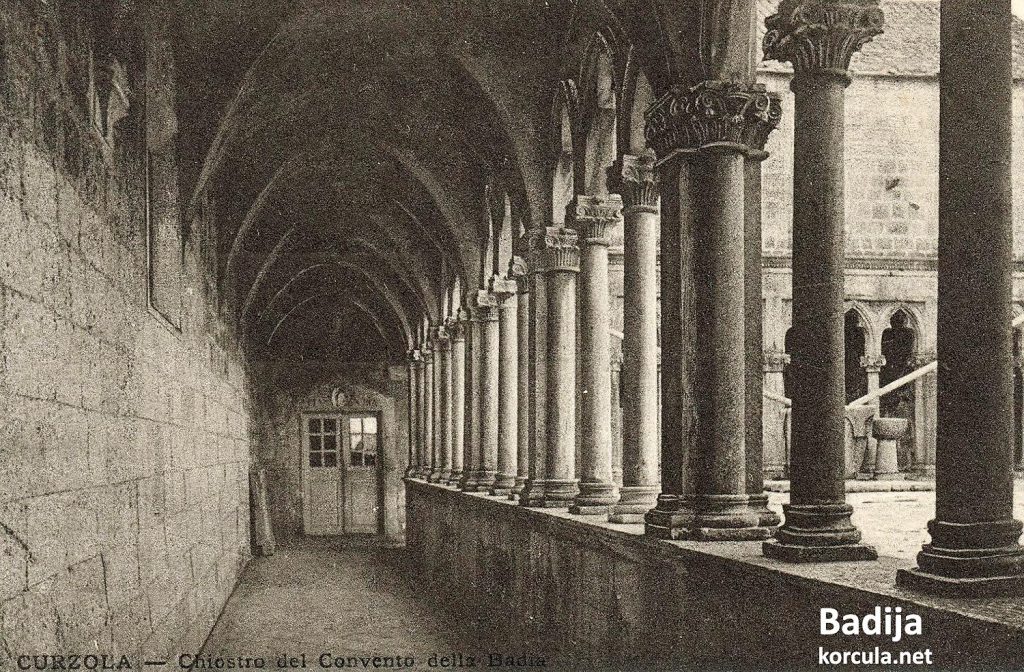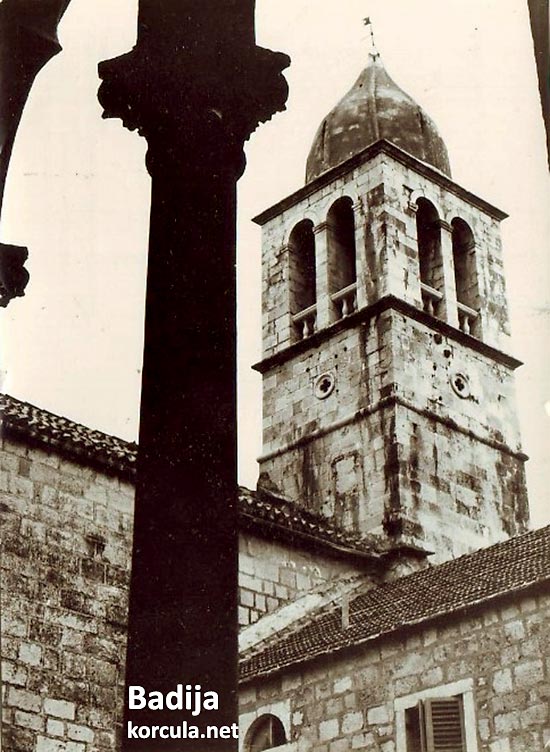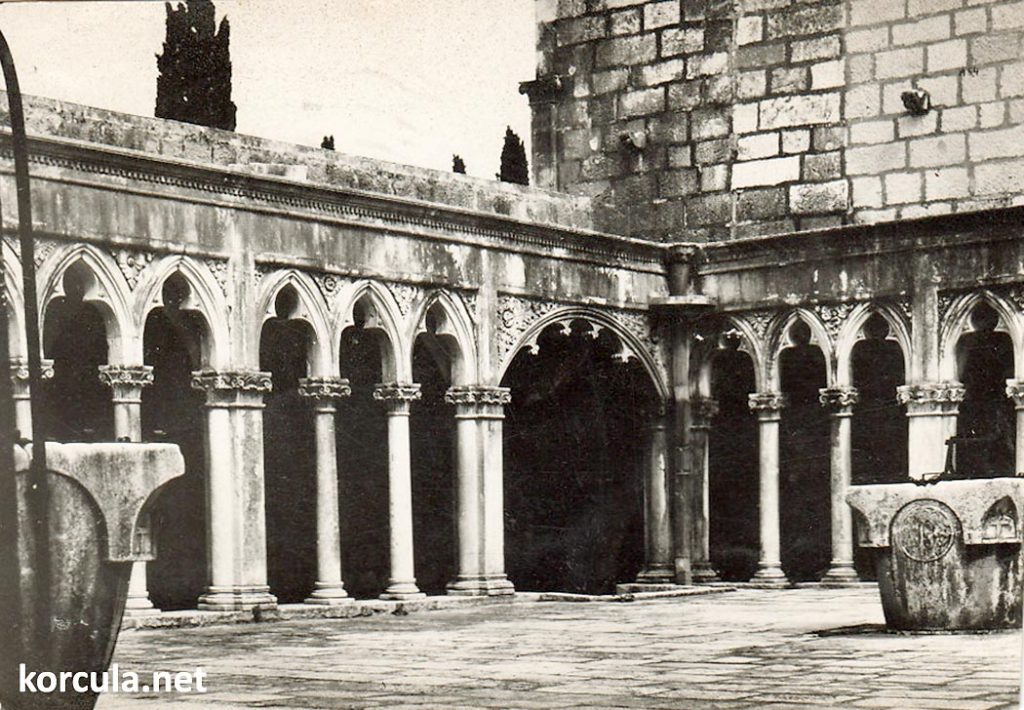Badija Church and Franciscan Monastery
The 15th century saw a boom in construction in Korčula and its environs that included also Badija.
The Cloister
By 1477, the stylishly simple Gothic cloister was completed which is still visible today. As you arrive on the jetty closest to the town of Korčula and walk towards the monastery, on your left you will see an oval opening into a side building. This annexe was used as a place for storing boats and is known locally as Frušturica. Another example of similar architecture is available in the other monastery in Korčula, Saint Nicholas.

Entering the grounds of the monastery from the south-eastern side, looking up above the entrance you will see a tympanum with the sculpted image of Mary and Jesus. Above them are two winged angels bearing the Christogram notice of IHS.
On the left is a stone font for holy water. Going inside, walking on the paved floor, you will see engravings of the names of the stonemasons who worked on the cloister centuries ago and gave life to the surroundings.
The space around the cloister follows the characteristics of many similar Franciscan monasteries of southern Croatia (like the one on Lopud island)
They reveal a Renaissance-era set up with a late gothic edge. The well-ordered triforium stands proudly, decorated discretely with sculpted oak and laurel leaves, reminiscent of the Venetian era architecture visible in many parts of the Adriatic.
Walking around, one gets a good idea why many came here for calm and contemplation. It included visitors, monks and numerous pilgrims who came here to enjoy the serenity offered by this secluded island. One of them included the 15th-century writer and father of Croatian literature Marko Marulić.
In the middle of the cloister, standing like a main feature among the numerous plants recently installed there, there is a water well.
Popular Routes: Split to Korcula, Korcula to Split, Dubrovnik to Korcula, Korcula to Dubrovnik
On the walls, a short chronological history of the complex tells the story of how it has survived numerous attacks, pillages and nationalization in the 20th century.

One of the most notorious ones were in 1571, as the Ottoman navy, having been frustrated by the stubborn resistance of the Korčulan defenders in one of the prequels of the historic battle of Lepanto, attacked the monastery, setting it on fire and pillaging it mercilessly.
The Church

Inside the church, a marble altar features the four Evangelist holding up a figure of Christ on a globe. One of the monastery’s first custodians was an English monk called Matthew who had fled the excesses of the Reformation, bringing back two alabasters featuring scenes from the passion of Christ. These can today be seen in the Korčula bishop’s treasury while the other five are in the Franciscan monastery in Hvar.
With the current reconstruction efforts, it takes some imagination to muster the presence of pilgrims coming from afar to worship the icon of the Virgin Mary which is reputed to have saved Korčula in 1571 or a large-sized ‘miraculous’ wooden cross brought by the Franciscans to Badija after the battle of Kosovo in 1389.
With many of its artworks now in other museums and monasteries, the church’s inside is somewhat bare after seeing the extravagant decoration of the inside of Korčula’s cathedral.
Nevertheless, despite damage, neglect and abandonment over the years, the skills of local stonemasons have survived in places the various historical challenges that the island (and its surroundings) were regularly faced with.
It included a pillaging expedition by pirates from Ulcinj in the 1660s that removed most of the valuables from the church and cloister and later even kidnapping some of the monks.
Many of the skilful masons are buried within the church, whose names you may be able to make out on the floor.

St Catherine’s Church
Following a route up the highest point of Badija, you come to St Catherine’s 16th-century church. Now barely recognizable having had its steeple turned into a watchtower, the top offers a great view of the surrounding area and is a fantastic place to watch the sunset.
